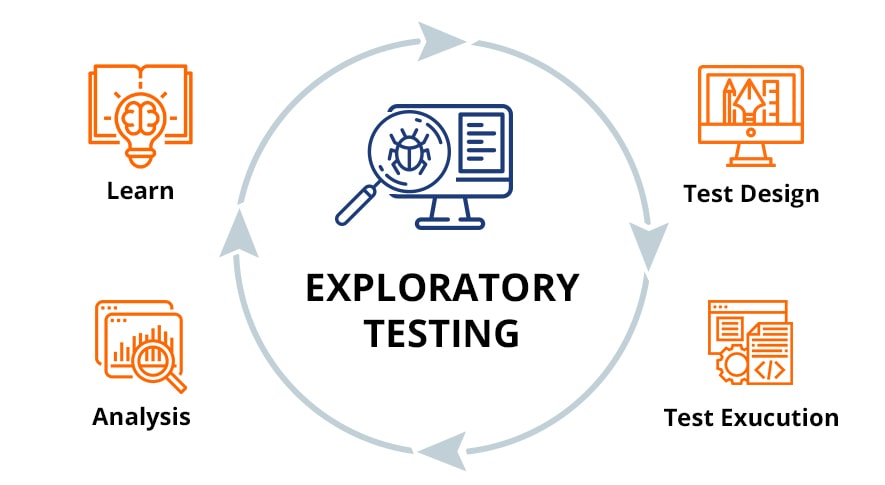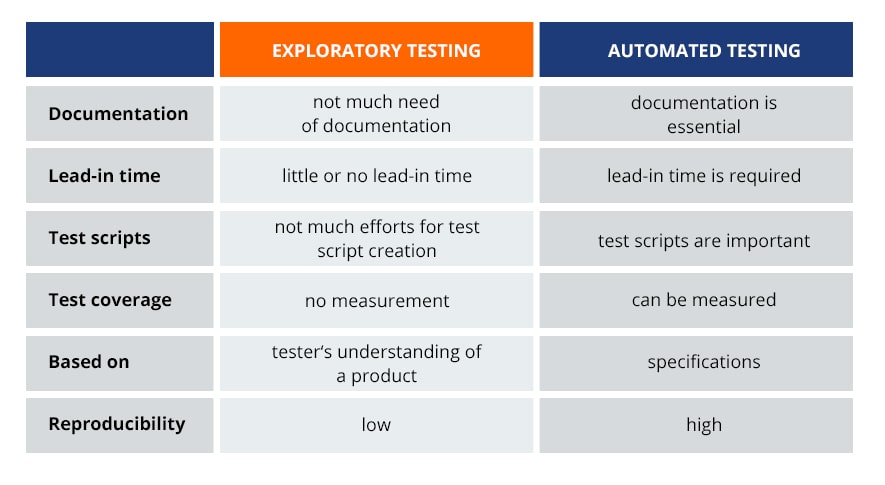Exploratory Testing – Advantages and Disadvantages
by Nataliia Vasylyna | February 23, 2011 5:58 pm
Note: this article was updated in August 2019.
Is everything in software testing depends on strict planning? Not always. Speaking about exploratory testing in Agile or any other project methodology[1], the basic factor to rely on is the qualification of testers. QATestLab is glad to share the tips on what must be considered while executing this testing.
What is Exploratory Testing
The basic aim of this testing is to find out the actual work of a product and its behavior under various conditions. Exploratory testing directly depends on the skill set of a tester. If testers pose a wide knowledge of the software, testing techniques, and are experienced in the composition of test cases, testing will likely be successful.

Such testing is effective to apply in case of incomplete requirements or to verify that previously performed tests detected important defects. Exploratory testing is also a suitable method if there are strict timeframes at a project.
Pluses and Minuses of Exploratory Tests
Like any other testing type, exploratory tests have definite conditions under which they perform best as well as benefits and possible pitfalls. Let’s have a look at them.
Advantages:
- possible to apply if there are no requirement documents;
- involve the investigation to detect additional bugs;
- much preparation is not necessary;
- accelerate bug detection;
- previous results can be used for future testing;
- overcome test automation[2] by effectiveness;
- reexamine all testing types.
Disadvantages:
- it is difficult to reproduce the failure;
- hard to decide whether the tools are needed;
- difficult to determine the most suitable test case;
- reporting is difficult without planned scripts;
- limited by testers’ skills set;
- difficult to document each procedure;
- it is not easy to say which tests were already performed.
Difference Between Exploratory and Automated Testing
The factors of a difference between these two types can be considered as pluses and minuses at the same time, but the majority of elements proves the simple flow of test performance during exploratory testing. Let’s define them.

How to Perform Exploratory Testing
Exploratory test management strategy should be based on 5 main stages:
- Develop a bug classification.
- Classify the bugs in the previous projects by types.
- Analyze the reasons for glitches.
- Define the risks and suggest ideas for testing.
- Create a testing charter.
Test Charter must include:
- what must be tested;
- how the testing must be performed;
- what must be considered.
Results Review:
- Defects assessment.
- Learning based on the performed testing activities and their results.
- Analysis of areas covered.
Debriefing:
- compilation of output data;
- results and charter comparison;
- checking of need for extra testing.
The process of exploratory testing must meet certain requirements which state that the goal and tasks of testing are clearly defined as the specifications do not play the first part here. However, it is reasonable to note what must be tested, for what reason and visualize the quality assessment of the application under testing.
Summary on Exploratory Testing
Exploratory testing does not have strictly defined strategies, but this testing still remains powerful. It allows testers to work with real-time test cases. The freedom of exploratory testing allows applying the method independently from the development model of a project because it requires a minimum of documents and formalities. Such an advantage proves this testing to be a good helping tool to detect critical bugs concentrating on the project’s quality without thinking much about precise documenting.
Learn more from QATestLab
Related Posts:
- project methodology: https://blog.qatestlab.com/2019/08/08/choose-project-methodology/
- test automation: https://qatestlab.com/services/test-automation/
- 3 Main Points of Exploratory Testing: https://blog.qatestlab.com/2016/09/07/exploratory-testing-points/
- The Mystery of Exploratory Testing: https://blog.qatestlab.com/2015/11/26/exploratory-testing-mystery/
- Why is Exploratory Testing Underestimated?: https://blog.qatestlab.com/2014/12/18/why-is-exploratory-testing-underestimated/
Source URL: https://blog.qatestlab.com/2011/02/23/exploratory-testing-advantages-and-disadvantages/

